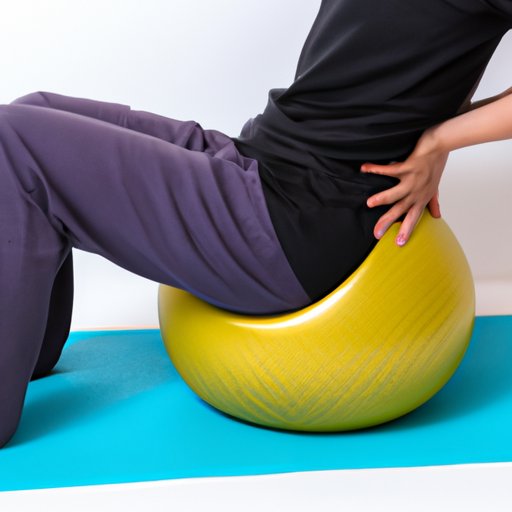Introduction
Back pain is a common complaint that can range from mild to severe. It can be caused by a variety of factors, such as poor posture, muscle strain, injury, or even underlying medical conditions. Fortunately, there are many ways to alleviate back pain quickly and effectively at home.
Try Gentle Stretching Exercises
Stretching can be an effective way to reduce back pain. When done correctly, it can help improve flexibility, increase range of motion, reduce tension in the muscles, and provide relief from pain. Additionally, stretching can help prevent future back pain by strengthening the muscles and improving posture.
There are several types of stretching exercises that can be beneficial for back pain. These include dynamic stretching (moving parts of your body through their full range of motion) and static stretching (holding stretches for a set amount of time). Dynamic stretching can be especially helpful for those with chronic back pain, as it helps to improve flexibility and reduce stiffness.
For those with back pain, some recommended stretches include: the child’s pose, cobra pose, cat-cow stretch, and bridge pose. Make sure to perform each stretch slowly and carefully. It’s also important to stop if you experience any pain or discomfort.
Apply Heat or Cold to the Affected Area
Applying heat or cold to the affected area can provide immediate relief from back pain. Heat therapy, such as using a heating pad or hot water bottle, increases blood flow to the area, which can help relax tense muscles and reduce inflammation. Cold therapy, such as using an ice pack or cold compress, can help reduce swelling and offer temporary pain relief.
When using either form of therapy, it’s important to avoid skin irritations. For heat therapy, make sure to use low heat settings and never leave the heating pad on for too long. For cold therapy, wrap the cold pack in a towel before applying it to the skin. Additionally, it’s best to limit application to 15-20 minutes at a time.
Take Over-the-Counter Pain Medication
Taking over-the-counter pain medication can also provide quick relief from back pain. Popular options include acetaminophen, ibuprofen, and naproxen. Be sure to follow all directions on the packaging, as well as any advice given by your doctor. Additionally, it’s important to understand potential side effects and interactions with other medications.
If you have any questions or concerns about taking over-the-counter pain medications, speak with your doctor or pharmacist. They can provide guidance on which medications may be most suitable for your specific needs and provide tips for safe usage.
Improve Your Posture
Improving your posture can help reduce back pain and prevent future issues. Poor posture puts extra stress on the spine, which can lead to pain and discomfort. To correct poor posture, focus on keeping your head, shoulders, and back in alignment. Additionally, try to maintain a neutral position when sitting or standing.
It’s also important to be mindful of your movements. When lifting heavy objects, bend at the knees and keep your back straight. When sitting, make sure to take regular breaks and adjust your posture every so often. Finally, make sure your workspace is ergonomically designed to support your back.
Use an Exercise Ball
Using an exercise ball can be an effective way to alleviate back pain. Exercise balls are great for stretching and strengthening the core muscles that support the spine. This can help reduce pain, improve flexibility, and reduce the risk of future back pain.
When using an exercise ball, it’s important to make sure it’s the right size for your height. Additionally, make sure to use slow and controlled movements to avoid straining the muscles. Finally, take regular breaks to rest your back and give your muscles a chance to recover.
Conclusion
Back pain can be uncomfortable and debilitating, but there are many ways to relieve it quickly and effectively at home. Try gentle stretching exercises, applying heat or cold to the affected area, taking over-the-counter medications, improving your posture, and using an exercise ball. However, if the pain persists or worsens, be sure to seek medical attention.


